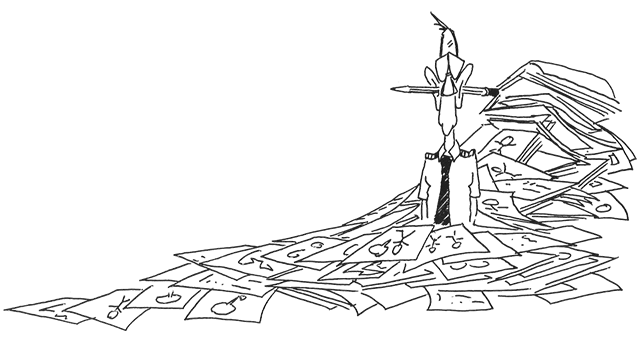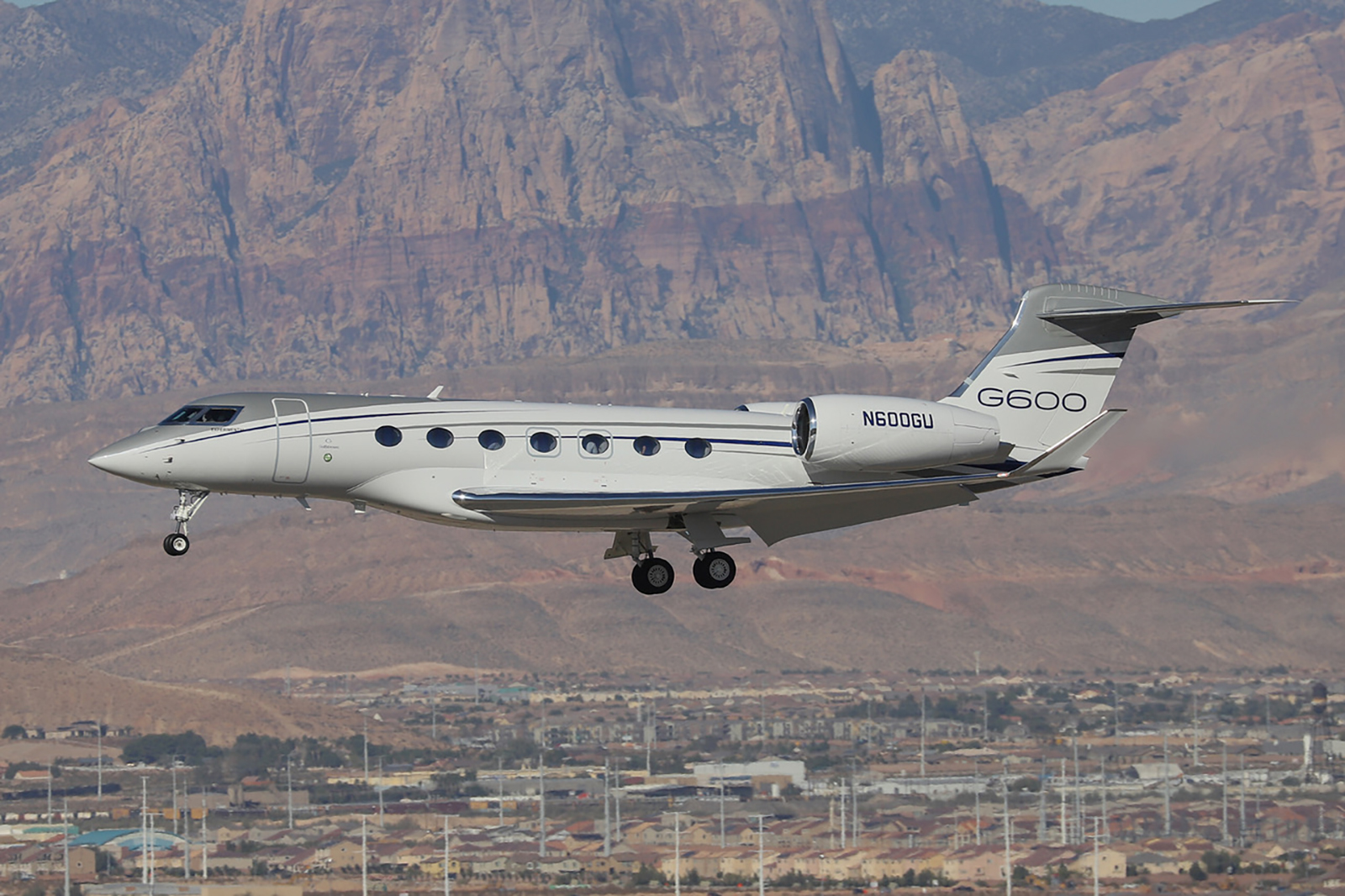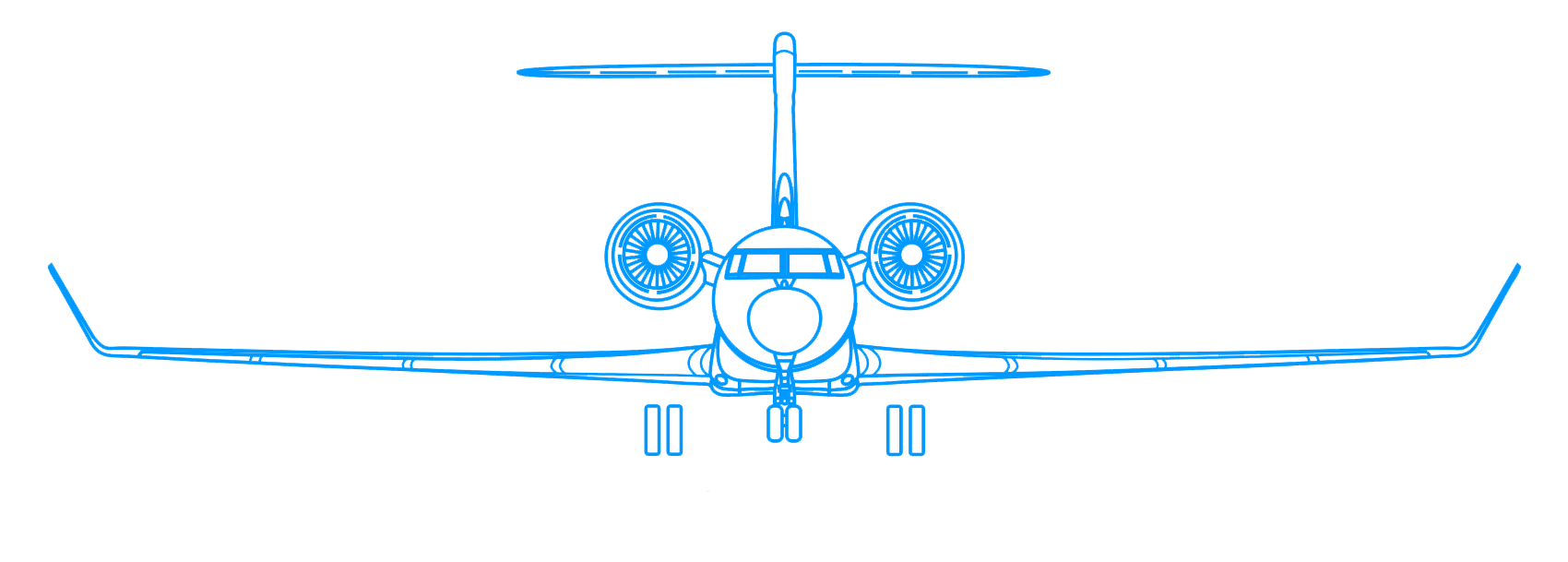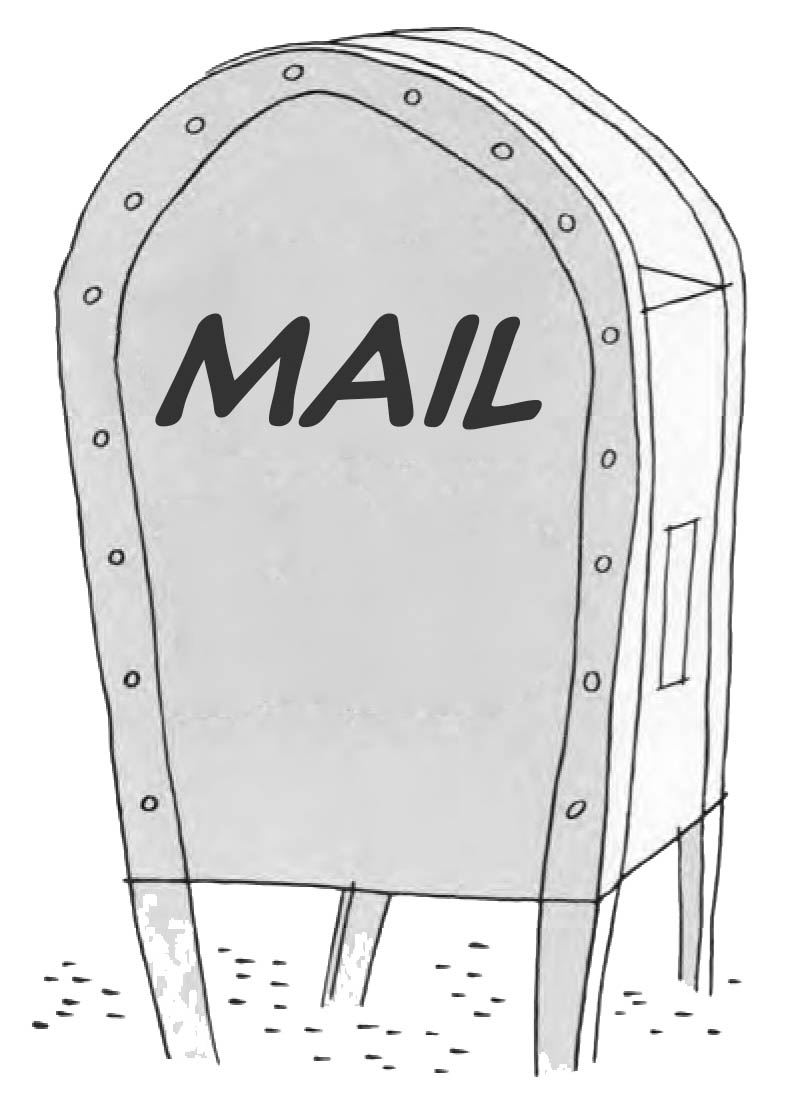Fly by Wired is primarily a story of people shaped by their experiences growing up trying to find their places in the world, only to find themselves caught up in a plot to "tear down the whole system." One of the characters attempts to use the computerized flight control systems on some business jets to this end. The "Fly By Wire" system removes all mechanical controls between the pilots and their flight controls, replacing them with digital signals along wires. These fly-by-wire systems were at first controversial, few were willing to give up that kind of control to computers. But the cost savings from weight reduction and aerodynamic efficiencies have ended all debate. Many business jets and a growing number of airliners have made use of fly-by-wire technology. Perhaps a quick primer is in order.
— James Albright

Updated:
2020-07-01

Photo credit: Matt Birch
(http://visualapproachimages.com/)
A main character in our story is the Gulfstream GVII, that company's second foray into fly-by-wire technology but most notable because of its revolutionary "clean sheet" design. It was the first series that fully embraced electrons over hardware. They are not alone in this. I've also flown fly-by-wire aircraft by Dassault and Embraer, which were both groundbreaking in their own rights. Airbus and Boeing also have a few fly-by-wire offerings.
All of this begs the question why? The primary answer is due to weight savings. The cables, pulleys and other replaced hardware were heavy. It takes fuel to carry all of that hardware. A second reason is for aerodynamic efficiency. If you put a computer between the pilot and the airplane, you can design an airplane that is faster and with longer range but would be too difficult for a mere human to fly.
A second question is what if? What if the computers break? Designers are required to add levels of redundancy. What if someone nefarious tries to hack into those computers and take control from the pilot? While not called this in so many words, manufacturers use fire walls to isolate the flight control systems from all other communications systems or other points of access. (As the book points out, there is yet another weak point.)
Have there been problems over the years? The few examples we have available have not been catastrophic, but fly-by-wire systems have not been entirely trouble free.
Finally, there are many complications when going from "fly by cable" to fly-by-wire. While fly-by-wire systems are lighter, less prone to breakdown, and provide efficiency not otherwise available, they are hard to design, to troubleshoot, and to train.

1
Why? Weight reduction.
The evolution of flight control technology
For most of the first decades of powered flight, flight controls meant cables, pulleys, and bell cranks between the pilot's stick or yoke and the actual flight controls (ailerons, rudders, elevators, etc.) and everything was easily understood. It made intuitive sense that pulling back on the stick or yoke caused the elevator to go up, for example, due to the mechanical translation of the forces.
As aircraft became faster and heavier, however, hydraulic assistance was needed to actuate the flight control surfaces. In some cases, aerodynamic contrivances, such as Balance tabs, were needed to assist the pilot. In most cases, these systems did not replace the cables and pulleys, but added to them. Flight control systems were not only getting heavier, but they were starting to change the "feel" of aircraft control.
Partial fly-by-wire systems began to replace mechanical systems. Electronic yaw dampers and spoilers, for example, improved aircraft control and in some cases reduced the number of mechanical systems.
A true fly-by-wire airplane eliminates the mechanical systems between the pilot and flight controls. This not only greatly reduces the total weight of the system, but often improves aircraft control and allows the use of safety systems to prevent the aircraft from exceeding safe flight envelopes.
Weight savings
Replacing non-fly-by-wire mechanical systems with full fly-by-wire systems offers many weight savings:
- Fewer mechanical componenents. Fly-by-wire systems replace many mechanical components, such as control cables, pulleys, and hydraulic systems, with electronic components like computers, sensors and wires.
- Lighter materials. Fly-by-wire systems can use lighter materials for control surfaces since the electronic actuators used in these systems are often lighter than the mechanical systems they replace. This can lead to weight reduction in control surfaces like ailerons, elevators, and rudders.
- Improved efficiency. Since fly-by-wire system are computer controlled, they don't need to be made as robustly to compensate for a human pilot's tendency to overcontrol.
- Integration of functions. Fly-by-wire systems can combine functions of various components to serve multiple purposes. Some FBW aircraft, for example, use ailerons on the ground to augment ground spoilers, allow for smaller dedicated ground spoilers.
- Elimination of backup systems. True fly-by-wire systems can eliminate heavy backup systems. The electronic and mechanical boxes of a dedicated autopilot system, for example can be replaced by software in the flight control computers.
A few words from two manufacturers
Fly-by-wire means that pilot inputs don’t mechanically move the control surfaces. Instead, inputs are read by a Flight Control Computer (FCC) that decides how to move the control surfaces to best achieve what the pilot wants. The FCC’s signals are sent electrically over a wire rather than mechanically through bell cranks and pulleys. The net result is:
- Enhanced flying qualities
- Enhanced stability
- Greater protection through the entire flight envelope, Continuous monitoring
- Improved maintainability
- Simplified rigging procedures
- Built-in test capability for easy troubleshooting
Source: GVII-G500/G600 PAS, p. 6-1
The digital FBW (Fly By Wire) technology allows:
- Improved safety by:
- Preventing the airplane from exceeding the safe flight envelope while reaching maximum airplane performance,
- Allowing instinctive reaction in emergency situation,
- Reduced pilot workload by:
- Simplifying airplane handling characteristics,
- Enhancing airplane stability,
- Improved performance.
Source: Dassault Falcon 8X DODDE, p. 01-02-00, p. 4/6
2
Why? Aerodynamic efficiency.
A fly-by-wire system enhances aerodynamic efficiency in several ways:
3
What if? Redundancy.
Source:
4
What if? Fire walls.
Source:
5
Problems? A few examples.
Source:
6
Complications? Design, maintenance, and pilot education hurdles.
7
Section Title
Source:
8
Section Title
Source:
9
Section Title
Source:
10
Section Title
Source:
11
Section Title
Source:
12
Section Title
Source:
13
Section Title
Source:
References
(Source material)
Falcon 8X Crew Operational Documentation for Dassult EASy (CODE), Dassault Aviation, Revision 04, September 10, 2020.
GVII-G500/G600 Production Aircraft Systems (PAS), Gulfstream Aerospace Corporation, Revision 9, Feb 8/22
Please note: Gulfstream Aerospace Corporation has no affiliation or connection whatsoever with this website, and Gulfstream does not review, endorse, or approve any of the content included on the site. As a result, Gulfstream is not responsible or liable for your use of any materials or information obtained from this site.
